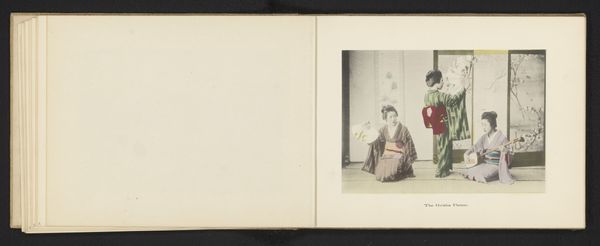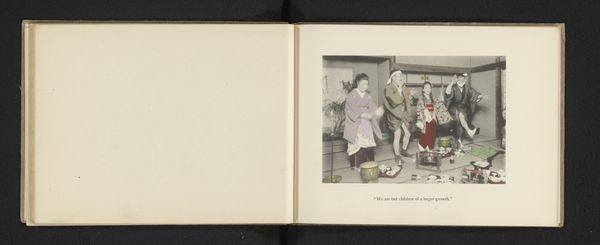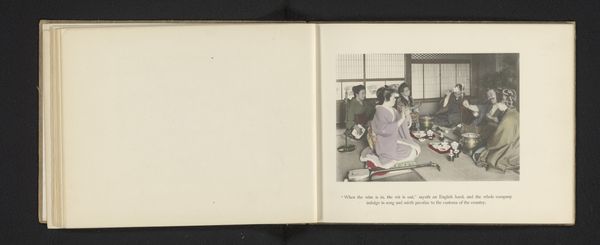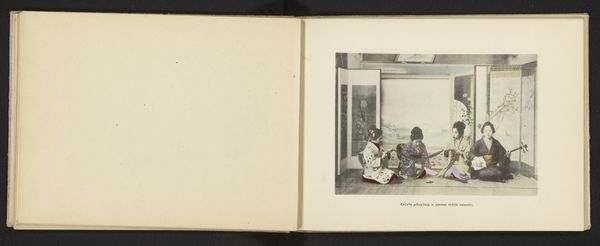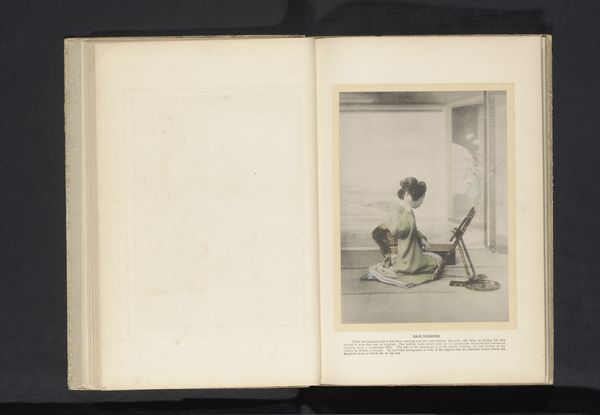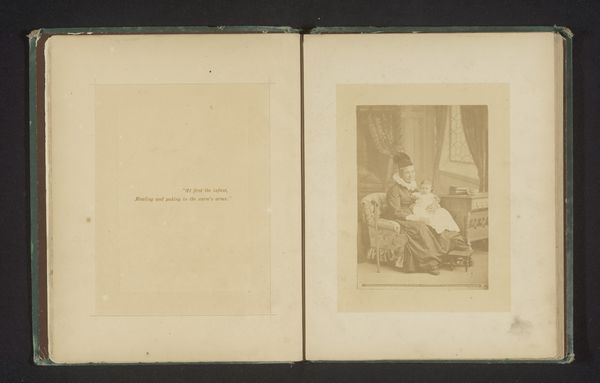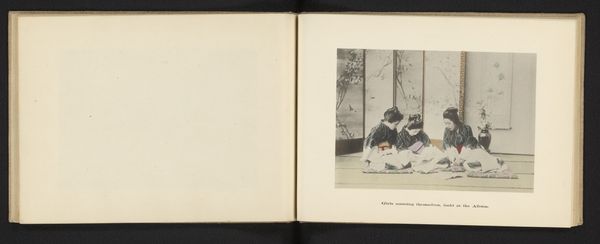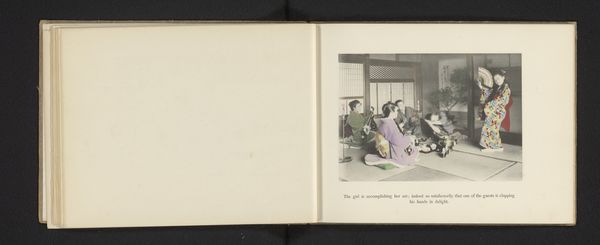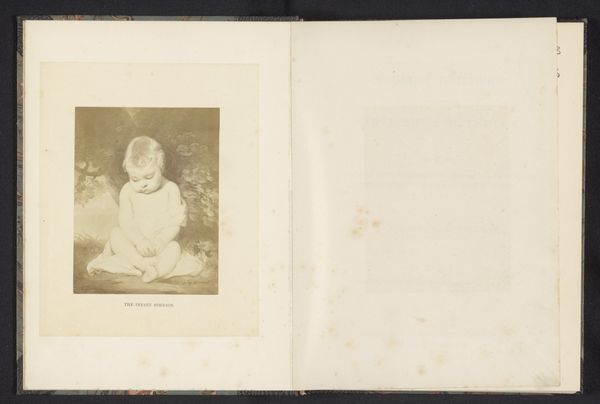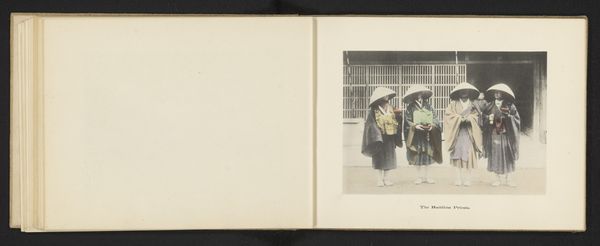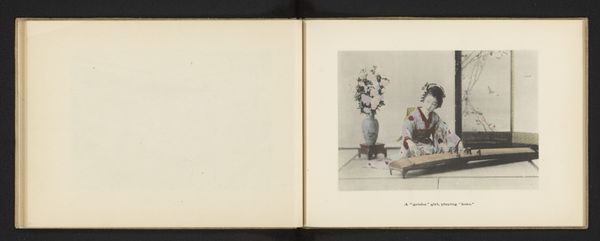
Vrouw in traditionele Japanse kleding die horen, zien en zwijgen verbeeldt c. 1895 - 1905
0:00
0:00
print, photography, collotype
#
portrait
# print
#
photography
#
collotype
#
coloured pencil
Dimensions: height 105 mm, width 151 mm
Copyright: Rijks Museum: Open Domain
Kōzaburō Tamamura crafted this photographic print portraying a woman embodying the "Three Wise Monkeys" principle: See no evil, hear no evil, speak no evil. Each pose, isolating sight, hearing, and speech, forms a triptych deeply rooted in Eastern philosophy. The motif’s journey is fascinating. Originating possibly in ancient Egypt, it migrated through the Silk Road, embedding itself in various cultures, notably in Japan's Toshogu Shrine. The gestures themselves—covering eyes, ears, mouth—aren't merely about physical action. They're potent symbols of introspection, moral discretion, and the conscious choice to filter external stimuli. Consider how these gestures resonate beyond their original intent. In times of turmoil, 'see no evil' might morph into willful blindness, a societal paralysis. Yet, at its core, the image urges mindful engagement with the world, reminding us that what we choose to acknowledge shapes our reality. The cyclical, adaptive nature of symbols reveals the enduring human quest for meaning and moral grounding.
Comments
No comments
Be the first to comment and join the conversation on the ultimate creative platform.
